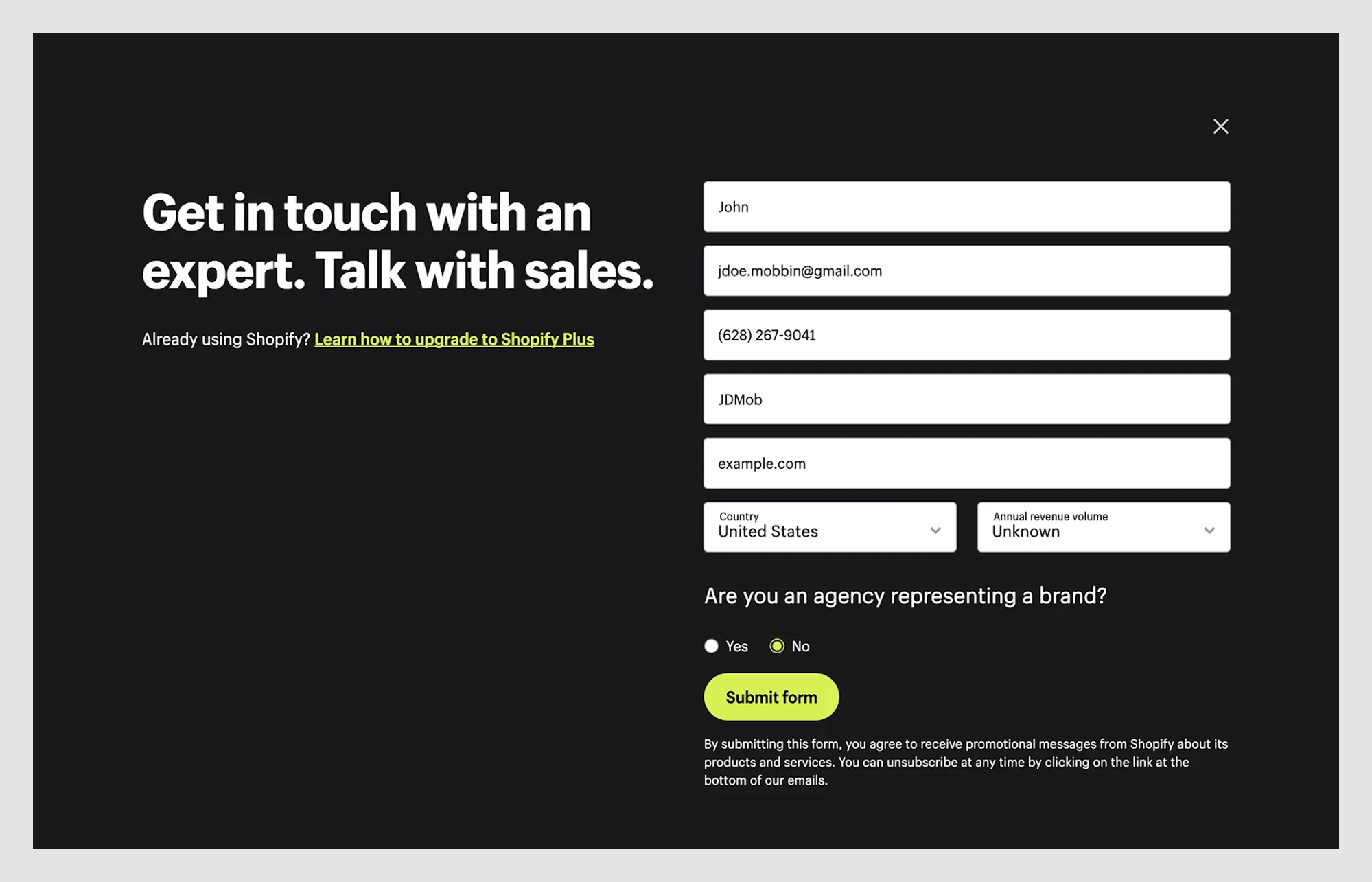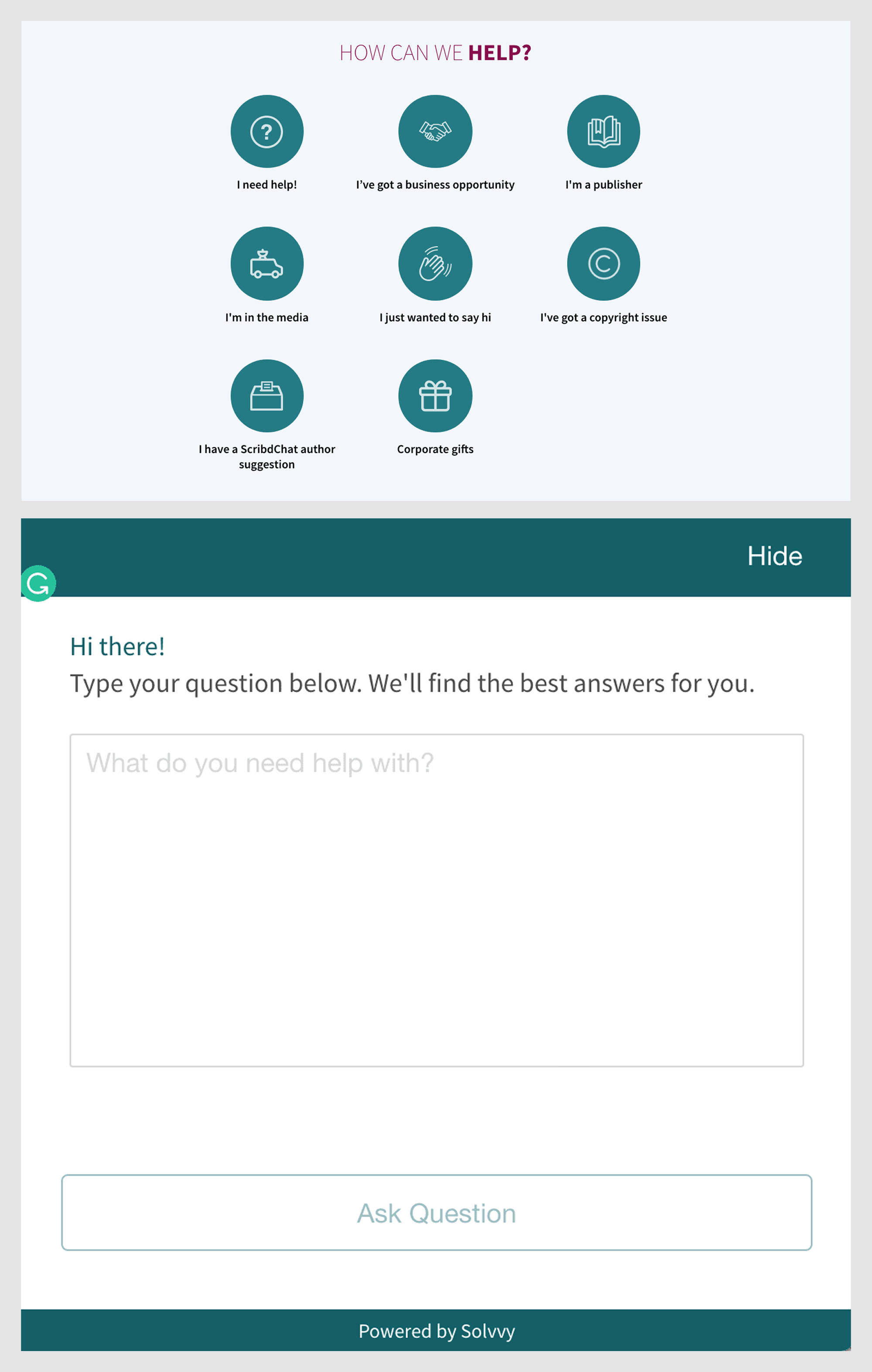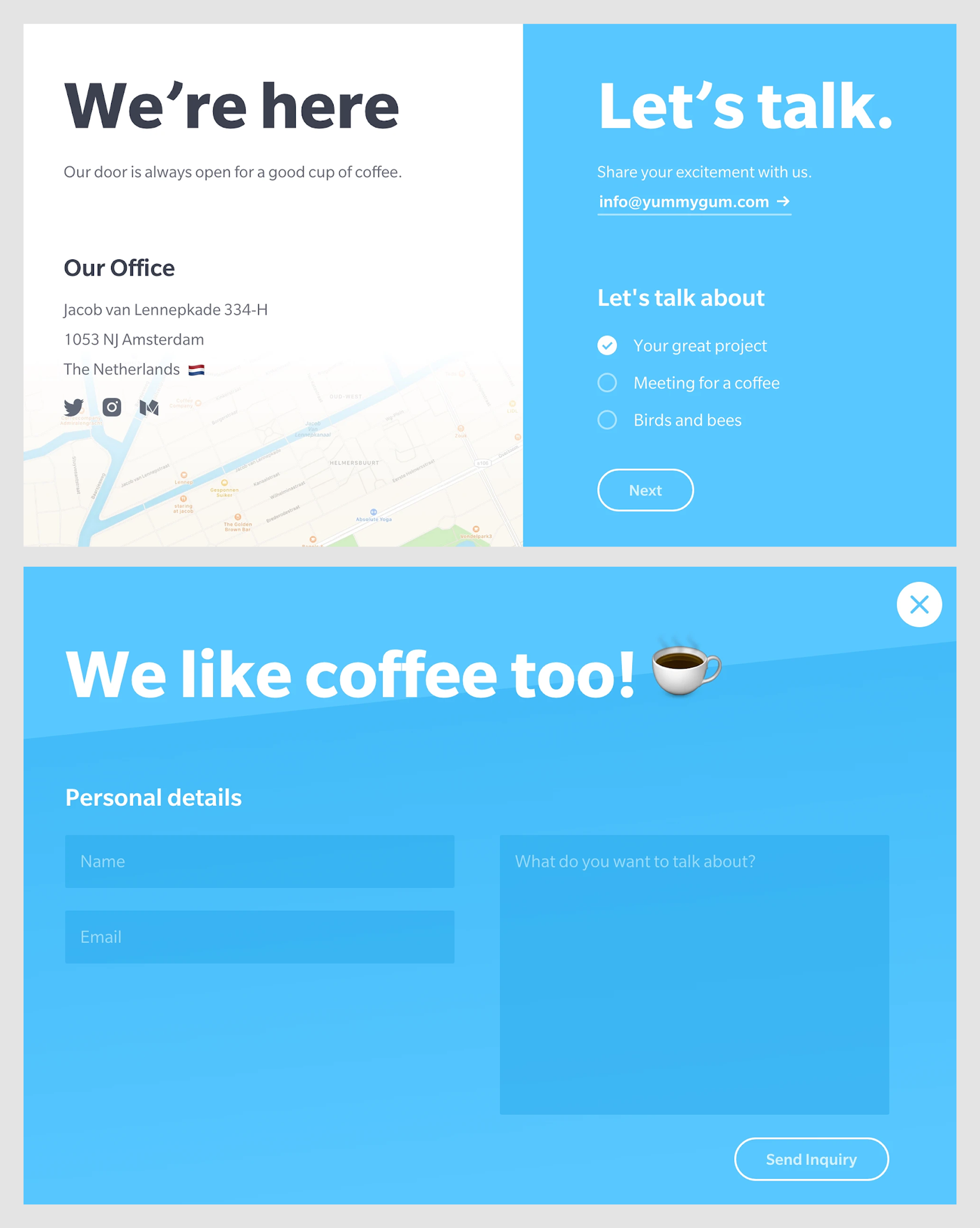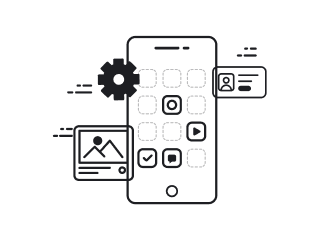A developer recently posted a question on Reddit that pretty much sums up how many people feel: “Do people really still use contact forms?”
.png)
They’d seen too many forms get ignored, too many messages go unanswered, and were wondering if maybe chatbots, email buttons, or DMs had replaced them.
Here’s the reality: yes, contact forms are still alive and thriving.
Teams managing dozens of websites still consider forms one of the most reliable lead sources. And when designed well, over 90% of real inquiries respond to follow-up messages.
The reasons are simple:
- A contact form on a website makes it easier to track incoming messages
- They let you ask for exactly the customer information you need
- And they’re easier to protect from spam than a raw email address
Still, most contact form designs don’t work nearly as well as they should. They ask too many unnecessary fields. They look like they were designed in 2006. They don’t confirm when your message was received. Or worse — they just don’t send at all.
This guide will help you design a website contact form that actually gets used. Whether you need a quick, no-code contact us form for your MVP, a beautiful a beautiful dedicated contact page that matches your brand identity, or something custom, fast, and secure…
You’ll find what you need here:
- Inspiring website contact form examples (including a few from Eleken’s work)
- Tools and templates for every skill level
- UX and accessibility best practices
- And crucially, what happens after the form gets submitted
Let’s build a user-friendly web form that actually does its job — and doesn’t get ignored.
Contact form examples and ideas (with UX breakdowns)
A good web form isn’t just a box for dumping customer information. It communicates trust, reduces friction, and gives your website visitors confidence that someone is actually listening.
Here are some great examples, from ultra-simple to bold and branded, plus why they work, and what makes each one a perfect example of user-friendly design.
1. Seocrawl (by Eleken): branded and bold
.png)
SEOCrawl’s sales contact form matches the product’s bold visual style. The red color, grid background, and sharp layout make it feel intentional, not generic.
The form includes just the essentials: name, email, and message. These three form fields are all that’s needed to generate leads from website visitors. The copy is warm, the layout is tight, and the entire communication process feels smooth.
2. Cheerity (by Eleken): clean and trust-focused
.png)
Cheerity’s contact us form is structured and spacious. A two-column layout organizes the input fields without feeling overwhelming.
Visible contact info and social links are included outside the web form, which helps build trust and reduce abandonment. It’s a simple form that still feels thoughtfully made.
3. Focus lab: structured and high-intent
.png)
Contact form example
Focus Lab’s website's contact experience is designed for serious sales inquiries. It opens with basic fields like name and email, and moves into more detailed steps, likely using radio buttons or dropdowns to segment query types.
The result is a streamlined experience that pre-qualifies potential customers and cuts down on back-and-forth emails.
4. Shopify: lead-focused and business-first

Shopify’s form is built for high-quality leads. It asks for name, email, phone, company, domain, country, revenue, and agency status — all on one screen. The layout is dense but orderly, balancing business needs with ease of use.
Despite the number of fields, the contact us form example feels modern. Bold typography, dark background, and high-contrast buttons guide the eye, avoiding the common trap of good UI bad UX. This form isn’t for casual questions. It’s for serious buyers ready to talk to sales.
5. OpenTable: Guided and segmented
.png)
OpenTable’s booking form starts with a visual selector for restaurant type. That first dropdown menu sets the tone: helpful, fast, and specific.
After that, users are guided through different forms based on their choice — creating a smooth experience without extra clutter. This format helps OpenTable route inquiries more effectively by applying familiar UX design patterns that give users a sense of progress and purpose. If your form requires multiple steps, consider breaking it up with a wizard UI pattern to guide users one stage at a time.
6. Mailchimp: Clear, corporate, and functional
.png)
Mailchimp’s website contact form keeps things traditional but effective. It includes basic contact form elements like name, company, region, and the number of contacts. These essential fields help qualify users without overwhelming them.
The two-column layout is efficient, and the surrounding elements, like phone and chat buttons, support website visitors who might prefer other methods. It’s a contact us form example that proves clarity still converts.
7. Untitled UI: Interactive and conversion-driven
.png)
This example contact us page asks for team size, budget, and service needs using sliders and selectable tags. Instead of traditional text fields, users interact with inputs visually, which feels faster and more engaging.
Alongside the form is a testimonial with a photo and real metrics, reinforcing trust. The layout is clean and modular, designed to qualify leads without friction while showing social proof at the point of contact.
8. Physica: Editorial and expressive
.png)
Physica’s contact us form example feels more like a magazine spread than a tech interface. It uses a soft color palette, bold illustration, and editorial typography to create a memorable visual style, without losing clarity.
The form itself is simple: name, email, topic, and message. There’s also a newsletter opt-in and clear “Send Message” button. It proves that even the most expressive website contact form examples can still be functional and focused.
9. OpticOdds: Sleek and conversion-focused
.png)
OpticOdds uses a dark, gradient-heavy design that matches its product branding. The contact us form is short — just four fields — and optimized to schedule demo calls. Its mobile and desktop layouts are nearly identical, ensuring consistency.
Clear labels, a bold blue CTA, and thoughtful input field design make it one of the best contact forms for fast-moving teams.
10. Uprankly: Direct and lead-focused
.png)
Uprankly’s contact form idea is all about speed. The layout is split into two sections: contact details on the left, and a short inquiry form on the right. It asks only for name, email, subject, and message — enough to get a qualified lead started.
Bright colors and soft rounded edges give the form a friendly tone. Contact numbers, email, and location are clearly visible, reinforcing accessibility and trust without overwhelming the page.
11. Scribd: Intent filtering before contact

Instead of leading with a traditional web form, Scribd presents a contact us form example that starts with a grid of query types like “I need help” or “I’m a publisher.” This segmented flow guides website visitors based on intent before showing a form at all.
This approach aligns well with principles of UX customer support, reducing noise and streamlining resolution. Some contact pages also offer search bar examples or FAQ links to help guide users to faster resolutions.
12. Yummygum: Playful and brand-driven

Yummygum proves that even a basic contact form can feel fun and on-brand. One version opens with a quirky “We like coffee too!” greeting. The form stays minimal (name, email, and message) which helps potential customers fill it fast.
A second, more detailed web form adds project type and timeline, using a vivid background to keep things engaging. This is a best contact form approach for creative studios wanting to build trust and delight in equal measure.
13. Ban.do: Retro flair with a personal tone
.png)
Ban.do opens their contact page with pastel rotary phones and a giant “Hello, ban.do?” headline. It’s playful and on-brand, immediately setting a casual, welcoming tone. The copy encourages users to ask about anything, even puppy names.
The form itself is basic: name, email, message. But the surrounding voice and visuals make it feel anything but generic. It shows how tone and imagery can elevate even the simplest structure.
14. Demostack: Branded, bold, and built for demos
.png)
Demostack’s form opens with a clear pitch: “Tell us about yourself so we can show you a demo on the first call.” The form matches the brand’s quirky pink palette and rounded typography, making the design feel intentional and consistent.
It captures key lead data: email, name, company, size, and intent. The bold style makes it memorable, while the CTA stays focused on scheduling a demo fast.
15. Gulf Coast Humane Society: Straightforward and user-friendly
.png)
This nonprofit’s contact us page example is stripped to the essentials: name, email, and phone number. It’s paired with friendly imagery and clearly listed department contacts for direct outreach.
Sometimes the best contact form is the one that gets out of the way, and lets people talk to a real human fast.
16. Marvel: Playful form with purposeful structure
.png)
Marvel’s contact page uses playful illustration and a minimal layout to create a lighthearted first impression. The form itself is focused — just full name, email, and message, making it easy to reach out without friction.
Below the form, Marvel adds quick-access links for sales, support, and press which could be enhanced even further with tabs UX to switch between query types. This extra structure helps route inquiries efficiently while maintaining the brand’s fun tone and user-friendly vibe.
17. Maeve: Retro charm with functional clarity
.png)
Maeve’s contact page embraces bold branding with a retro, candy-colored aesthetic that stands out immediately. The rounded fields and playful type give it personality without sacrificing clarity.
The layout is split smartly: key contact info and store details on the left, and a clean, focused form on the right. It’s friendly and vibrant, while still providing everything a user needs to get in touch quickly.
18. Slack: Helpful, human, and straight to the point
.png)
Slack’s contact form begins with a friendly message: “Questions, bug reports, feedback — we’re here for all of it.” It immediately sets the tone that support is personal and approachable.
Instead of a blank form, Slack guides users with a topic selector and links to related questions. This reduces friction while collecting helpful context. The form is clear, concise, and backed by friendly team photos, reinforcing trust with a human touch.
19. Cevitxef: Brutalist booking with brutalist style
.png)
Cevitxef’s form starts with a bold sticky nav button — black, outlined, and highlighted with a pink hover effect. Clicking it launches a full-screen grid-lined reservation form in stark black and white.
Every field adds a red activation dot when clicked, injecting color and guiding attention using basic Gestalt principles. Paired with oversized type and a scrolling CTA, the form turns a basic action into a brand experience.
20. Antidote: Retro, focused, and selectively personal
.png)
Antidote’s form uses all-lowercase text and a monospace font for a terminal-inspired look. The background is blue, the questions are centered, and the experience is stripped down to the essentials.
It presents one question at a time across seven steps. This format filters serious leads while reinforcing the brand’s calm, focused identity.
You’ve seen what great contact form design looks like. But how do you go from inspiration to implementation?
Contact Form Templates & Tools You Can Use Today
If you don’t have time to design something from the ground up, you’re not alone. Fortunately, there are dozens of tools, templates, and integrations for every skill level that let you build clean, functional forms in minutes.
Below, we’ve curated the best solutions by category from no-code builders to developer-first frameworks.
No-code and low-code form tools
These platforms let you add contact forms to your site without writing backend logic. They’re ideal for static sites, MVPs, portfolios, or CMS-powered landing pages.
1. Web3Forms – The Reddit favorite
.png)
If you're building a static site or just want a form that works without JavaScript or servers, Web3Forms is a solid pick. It's free, spam-protected (reCAPTCHA v3), and developer-trusted.
You just add a few lines of HTML and point the form to your endpoint. It’s perfect for JAMstack sites or projects that don’t need full CRM integration.
2. Formsubmit – The “just send me the email” tool
.png)
Formsubmit is as simple as it gets. Add an HTML <form> with your email, and you’ll start getting submissions in your inbox. No backend, no signup, no scripts.
It’s ideal for quick-use cases like RSVP pages, wedding sites, or “under construction” splash pages where you just want a message box and a send button.
3. Tally.so – Notion-style forms with rich logic
.png)
Tally is what happens when Notion meets Typeform. You get conditional logic, branded styling, and integrations with tools like Zapier, Airtable, and Slack.
Perfect for marketing teams or founders who want a simple setup and flexibility, without the limits of basic form plugins.
4. EmailJS – Send form data via JavaScript
.png)
EmailJS lets you send form submissions directly to email using only client-side code. It’s a useful bridge between custom UI and low-lift backend.
If you’re building a React/Vue front-end and don’t want a full server, this gives you a “send email” function with very little overhead.
5. Netlify Forms, UseBasin, and Cloudflare Workers – Static-first dev tools
These tools are best for developers who want static hosting and dynamic form handling in one place.
- Netlify Forms: Detects forms in your HTML and wires up endpoints automatically.
- UseBasin: Lightweight form backend with analytics and spam filtering.
- Cloudflare Workers: Gives full control over form logic and delivery with serverless functions.
Ideal for JAMstack and modern frontend builds that need custom workflows.
6. Getsitecontrol – Lightweight popup forms (if you must)
.png)
Getsitecontrol isn’t just a contact form — it’s more like a toolkit for popups, surveys, and banners. You can embed contact forms as sticky buttons, modal windows, exit intents, or slide-ins.
It’s not our favorite for pure contact use, but it works well if you need attention-grabbing UI patterns on top of your content.
7. WordPress plugins – The CMS-friendly route
If you're using WordPress, skip the custom code and go with a plugin.
- Contact Form 7 (CF7): Lightweight and endlessly customizable with HTML and shortcodes.
- WPForms: Drag-and-drop builder with conditional logic and email automation baked in. Ideal for marketers or teams without a developer.
HTML and CSS templates
If you want full visual control and already have a site running, HTML/CSS templates are a great option. Drop them into your codebase and style them however you want — no signup required.
8. Colorlib’s free form templates – Plug-and-play layouts
.png)
Colorlib has a huge collection of free form designs: fullscreen heroes, minimalist black-on-white layouts, image backgrounds, and more. Most require no JavaScript and just a bit of CSS tweaking.
Use cases:
- Creative portfolios: Centered, single-column layouts with lots of white space.
- SaaS or B2B sites: Multi-field forms with input labels and clear CTAs.
- eCommerce: Inline forms near product FAQs or in sticky footers.
- Local businesses: Basic contact + Google Map + phone number.
How to get started:
Download a free HTML template, drop it into your project folder, and replace the placeholder content. Then connect the <form> action to a handler like Web3Forms, Formsubmit, or your CMS plugin.
If you’re on GitHub, you’ll also find pre-styled boilerplates that come responsive out of the box. Add animations or microinteractions later if you want polish.
Dev-friendly DIY options
If you’re comfortable writing backend code, you can skip platforms and build exactly what you need — lightweight, flexible, and dependency-free.
9. PHPMailer – The classic PHP email workhorse
PHPMailer is still one of the most reliable ways to send form submissions using PHP. It handles SMTP, attachments, error catching, and custom headers.
You just need a handler that grabs $_POST fields, sanitizes inputs, and passes them to PHPMailer. Add a honeypot to block bots, and you're good to go.
10. Node.js + nodemailer – Modern JavaScript setup
Nodemailer is the go-to for sending email in Node environments. Pair it with Express, and you’ve got a backend in under 100 lines.
Add express-validator for field validation and rate limiting for spam control. Works great with modern frontends like Next.js or Vue.
11. Slim and Symfony – Modular PHP frameworks
Don’t need a full CMS? Use Slim (a minimal PHP framework) or Symfony components. You can load just the Form, Validator, and Mailer modules — no bloat.
This gives you routing and logic control without the complexity of Laravel.
Spam protection that actually works
No matter your stack, protect your form. Here's how:
- Honeypot fields — Invisible inputs that bots fill but humans ignore. Drop these into your form and discard any that trigger them.
- Google reCAPTCHA v2 or v3 — Trusted and widely supported. v3 runs invisibly but may have privacy trade-offs.
- Rate limiting — Prevent repeat submissions from the same IP. Middleware like Express-rate-limit or Nginx rules work well.
Bonus: Make sure your SMTP provider uses TLS/SSL. And if you’re storing data, follow GDPR/CCPA where applicable.
If you're handling user data, make sure your SMTP provider supports secure transport and that you're storing (or discarding) data in compliance with local privacy laws.
Once you’ve chosen a tool or template, the next step is making sure your form actually works, not just technically, but for your users. Let’s look at the design principles that turn a basic form into one that people actually complete.
Best practices: How to design a contact form that converts
You can have the best backend setup or the slickest UI, but if your contact form feels like a chore, users will bounce. A high-converting form is clear, fast, and frictionless, while still collecting what you need.
These best practices come from usability research (like NN/g) and lessons learned from the examples above. The best forms apply subtle behavioral nudges from progressive disclosure to structured layouts all rooted in well-known psychology laws that influence how users interact with interfaces.
UX tips that make a real difference
- Use 3 to 5 fields max
Every additional field increases the chance of drop-off. Only ask for what you’ll actually use. Name, email, and message are usually enough. If you need more information, such as company size or budget, give people a reason to share.
- Stick to a one-column layout
Multiple columns look nice but break natural reading patterns. One column is faster to scan, easier to navigate, and more mobile-friendly.
- Always show field labels
Floating placeholders can disappear as people type. Use visible labels and pair them with helpful microcopy to improve UX readability.
- Design a clear and specific CTA
“Submit” is vague. Use something like “Send message,” “Request a demo,” or “Book a call” instead. It sets expectations and feels more human.
- Tell users what happens next
Don’t leave people wondering. Add a line below the button like “We’ll get back to you in 24 hours” or “You’ll receive a confirmation email.”
Mobile optimization is non-negotiable
- Make inputs touch-friendly
Use padding, spacing, and large tap targets. Avoid forms that require pinch-to-zoom or force horizontal scrolling.
- Set the correct input types
Use type="email", type="tel", etc., so mobile users get the right keyboard. It’s a small detail that improves speed and reduces errors.
- Test on actual devices
Simulators can miss real-world quirks. Test your form on at least one phone to check layout, readability, and interaction.
Accessibility isn’t optional
- Support keyboard navigation
All inputs and buttons should be reachable and usable via Tab and Enter. Make sure form focus is visible.
- Use ARIA labels when needed
If your form includes icons, non-standard inputs, or custom elements, use aria-label or aria-labelledby for screen readers.
- Check contrast and error handling
Form text and button colors should meet WCAG contrast guidelines — a core principle of accessibility in UX. Show clear error messages if fields are missing or incorrect — don’t just highlight them in red.
Here’s a quick visual summary of the most important UX, mobile, and accessibility tips to keep your form usable and conversion-friendly:
.png)
Even the best-designed form isn’t complete when the user hits “Send.” What happens next is just as important, and often overlooked. Let’s talk about what a great post-submit experience looks like.
What happens after submit?
Most contact forms treat the submit button like the finish line. But for your users, that click is just the start. What happens next (or doesn’t) can define how they feel about your brand.
Say thank you like you mean it
A simple “Thanks for reaching out!” goes a long way, especially when paired with confirmation that their message was received. Static thank-you pages are fine, but personalized success messages feel more human. Use it to set expectations: “We’ll reply within one business day” is better than silence.
Send a confirmation email
Confirmation emails add trust, especially if someone shared sensitive info. A short auto-response with their message copy, a support link, or your working hours shows you’re organized and responsive, even before a real person gets involved.
Show what’s next
Did they book a demo? Tell them to check their calendar. Did they ask a support question? Let them know when to expect a reply or where to find FAQs in the meantime. The best post-submit experiences reduce anxiety and add clarity.
Route and respond intelligently
On your side, make sure submissions aren’t just going into a black hole. Whether you use a CRM, inbox, Slack bot, or spreadsheet, route messages where they’ll be seen. Even better: auto-tag inquiries by topic or source to help your team respond faster.
Automation tools like Zapier, Make, or built-in integrations from form services can handle this easily.
Here’s a visual breakdown of what a smooth post-submit experience should include:
.png)
Of course, all of this assumes you actually need a contact form in the first place. But depending on your goals, there might be better, or simpler, ways to let people reach you. Let’s take a step back and ask the bigger question.
Do you even need a contact form?
Let’s be honest — not every website needs a contact form. Some users might prefer direct channels. Some businesses might not have the team or traffic to justify one. So before you copy-paste that <form> element, it’s worth asking: do you even need it?
When a contact form still makes sense
If you need to qualify leads, collect structured info, or triage messages, a form wins. It keeps communication organized, filters out spam, and lets you ask for exactly the details you want, like project budgets, timeframes, or company size.
It also helps teams route requests more efficiently. Support, sales, press — one form with branching logic can send messages to the right people, fast.
When it’s OK to skip the form
But if you're running a portfolio site, a simple blog, or a one-person studio, a contact form might just add unnecessary friction. In these cases, a plain email address, Telegram handle, or “DM us” link is more personal and often more convenient.
Visitors might trust those more, too — no wondering whether their message disappeared into the void.
When a bot might work better
For fast-moving teams, bots can outperform forms. A Slack or Discord bot, a Telegram workflow, or even a chatbot UI with a contact fallback can feel more responsive and help users self-route before ever sending a message.
If you're buried in vague “Let's connect” emails, replacing the form with a structured bot flow could save everyone time.
Whether you stick with a classic form, try a chatbot, or skip the form entirely, the goal remains the same: make it easy for people to reach you, and feel heard when they do. Let’s wrap this up.
Design effective contact forms with purpose, not just style
A well-designed contact form does more than look good — it works hard in the background to guide users, capture meaningful information, and start real conversations. It’s your brand’s digital handshake, and like any first impression, it should be confident, thoughtful, and easy to engage with.
Whether you borrow ideas from great examples, adapt a template to match your voice, or build something entirely custom, the goal remains the same: to make it effortless for the right people to reach out and feel confident doing so.
Ready to make your contact form work as hard as the rest of your product? Eleken designs experiences that convert.














